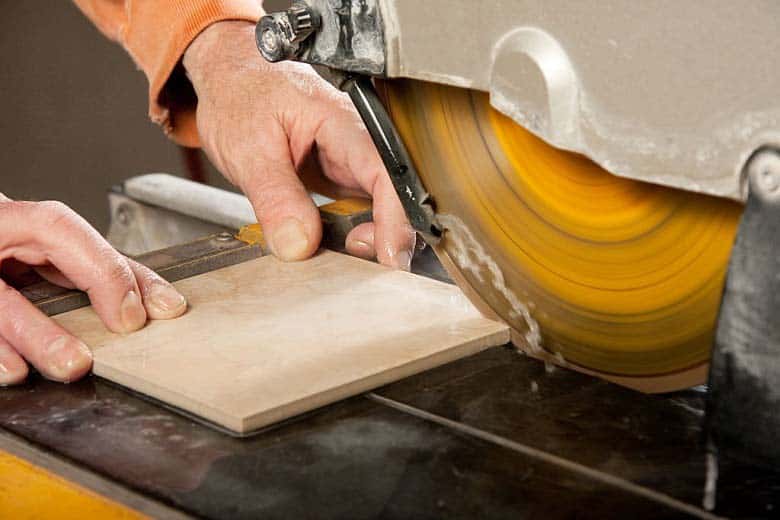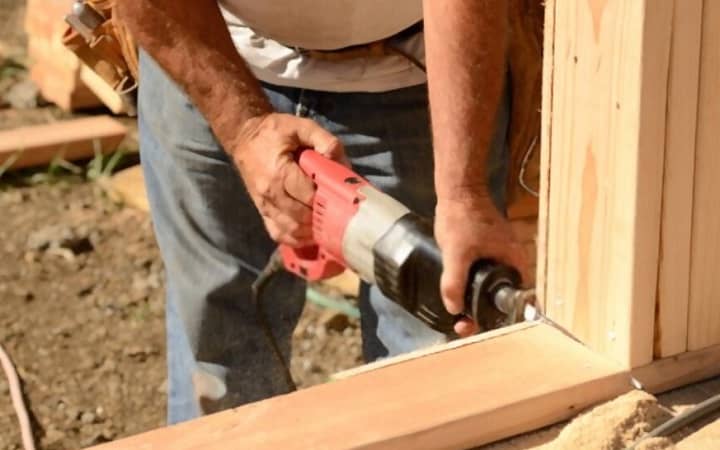A wet saw is a powerful tool that is typically used to cut hard materials such as tile, concrete, and stone. The saw uses a diamond blade that is submerged in water to cool and lubricate the blade as it cuts.
While it is possible to use a wet saw without water, it is not recommended. Doing so can damage the blade and overheat the motor. Additionally, it can be dangerous as the blade can get very hot without water to keep it cool. The water is used to cool the blade and prevent the tile from overheating and cracking.
In this article, we explained why water is essential when cutting hard materials with a Wet Saw. Take the time to read this article from beginning to end.
How Does Wet Saw Works
A wet saw is a powerful tool that is used to cut tiles, stone, and concrete. It uses a blade that is submerged in water to cool the blade and prevent dust from being created.
The water also lubricates the blade and prevents the material from drying out and binding the blade. Wet saws can be used to make straight cuts, as well as cuts for curves and circles.
When cutting tile, it is important to use a wet saw with a diamond blade. The diamond blade will last longer and cut through the tile more cleanly than a standard blade.
When cutting stone or concrete, it is important to use a wet saw with a carbide-tipped blade. The carbide-tipped blade will last longer and cut through the material more cleanly than a standard blade.
Always unplug the wet saw before changing the blade. Be sure to wear eye protection and gloves when changing the blade.
Why Need to Use Water on a Wet Saw
Water is used on a wet saw to help cool and lubricate the blade as it cuts through the tile. The water also helps to reduce the amount of dust that is created when cutting tile. If you are cutting a lot of tiles, or if the tile you are cutting is particularly hard, using a wet saw can help to extend the life of your blade. Cutting tile without water can cause the blade to overheat and wear out more quickly. In general, using a wet saw will produce a cleaner, smoother cut than using a dry saw.
Prevents overheating
Water can help prevent your saw from overheating in two ways. First, by constantly cooling the blade as it cuts, water can help dissipate some of the heat that would otherwise build up. Second, if your saw does happen to overheat, water can help quench the metal and prevent further damage.
Becoming clogged with debris
Water is essential for keeping a wet saw blade from becoming clogged with debris. The blade of a wet saw is constantly spinning, which can cause debris to build up quickly. If water is not used to keep the blade clean, the debris will eventually cause the blade to become clogged and stop spinning. This can damage the saw and cause it to malfunction. To prevent this from happening, it is important to always use water when operating a wet saw. The water will help to keep the blade clean and will also prevent the debris from becoming airborne and causing respiratory problems.
Wash debris from the cutting area.
Water is used on a wet saw to wash away any debris that is generated from cutting. This helps to keep the cutting area clean and clear, and also helps to prevent the spread of debris. Water helps to prevent the spread of dust and debris. Also, Water can help to increase the life of your wet saw blade.
What Is the Difference Between a Wet Saw and Dry Saw?
A wet saw is a powerful tool that uses a water-cooled diamond blade to make precise cuts in ceramic tile, porcelain tile, stone, and other hard materials. A wet saw is the best tool for making clean, precise cuts in hard materials.
A dry saw is a powerful tool that uses a dry-cut diamond blade to make precise cuts in ceramic tile, porcelain tile, stone, and other hard materials. A dry saw is the best tool for making quick, rough cuts in hard materials.
| wet saw | dry saw |
| A wet saw uses a water-cooled diamond blade to make clean, precise cuts in tile. | A dry saw is a handheld power tool that uses a dry-cut diamond blade to cut through the tile. |
| Dry saws are less expensive and can be used without water, making them more convenient for small projects. | Wet saws create less dust and are better for cutting large tiles or making long, straight cuts. |
| Wet saws are more expensive and require a water source. | Dry saws can be used on ceramic, porcelain, and stone tiles, while wet saws are better for cutting through harder materials like granite and marble. |
| When using a wet saw, it is important to keep the blade wet to avoid damaging the tile and to prevent the saw from overheating. | When using a dry saw, it is important to keep the area well-ventilated to avoid inhaling dust particles. |
Related Questions
Can you use a wet saw blade dry?
No, you should not use a wet saw blade dry. Wet saw blades are designed to be used with water to cool and lubricate the blade and workpiece. Using a wet saw blade dry will overheat the blade and damage the teeth.
Can you use a wet tile cutter dry?
You can use a wet tile cutter dry, but it is not recommended. Wet tile cutters are designed to be used wet in order to prevent them from overheating and to extend their life.
Is it better to cut tile wet or dry?
There is no definitive answer to this question as it depends on the specific situation and the type of tile being cut. In general, however, it is usually better to cut tile wet rather than dry. Wet cutting helps to keep the tile from cracking or breaking, and it also helps to prevent the formation of dust.
Can I use a diamond blade without water?
You can use a diamond blade without water, but it is not recommended. Doing so will shorten the lifespan of the blade and increase the likelihood of the blade breaking.
Conclusion
A wet saw is a specialized power tool that is designed to cut through tile and stone. It can be used without water, but it is not recommended. Doing so will shorten the life of the saw and create a more hazardous work environment.


